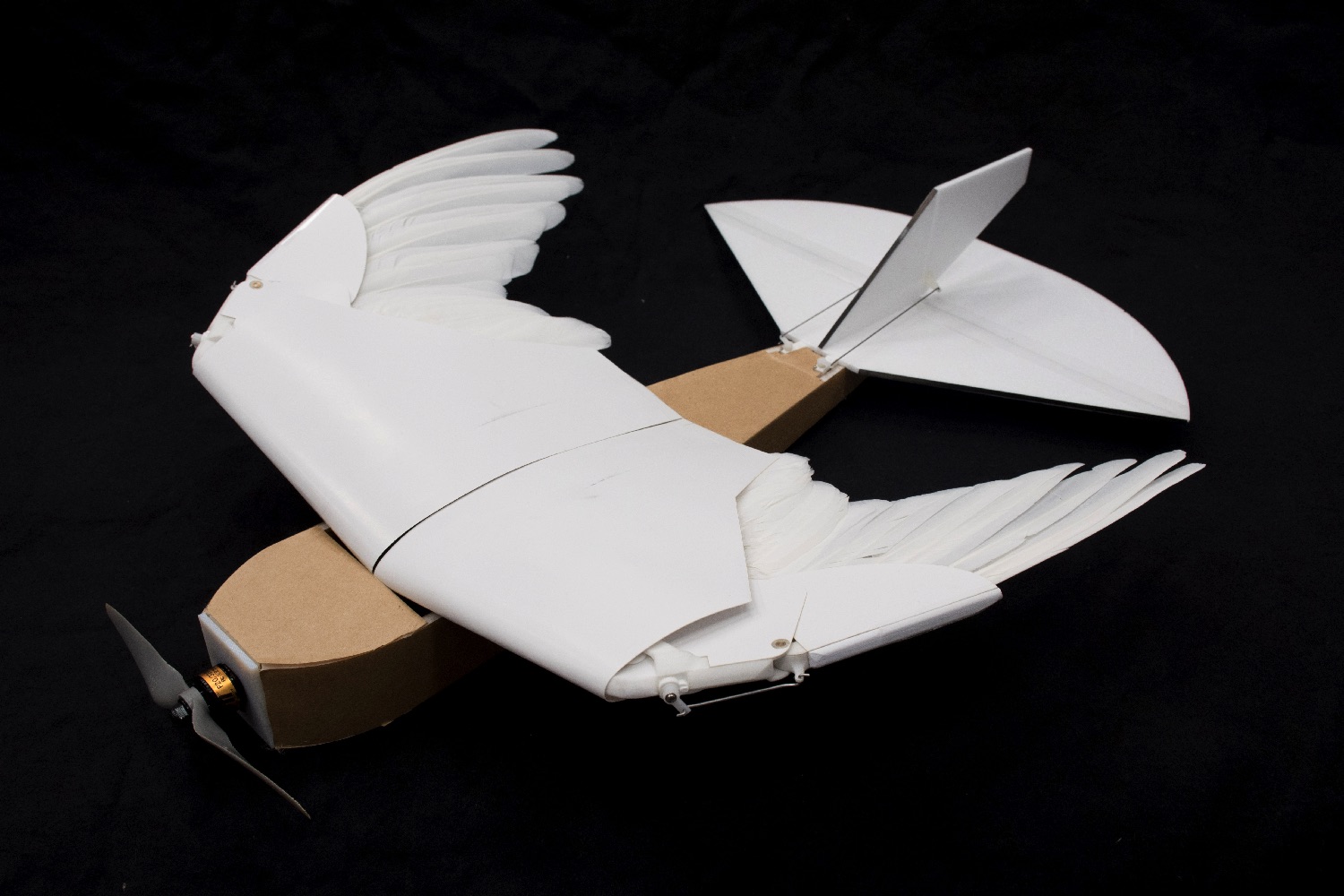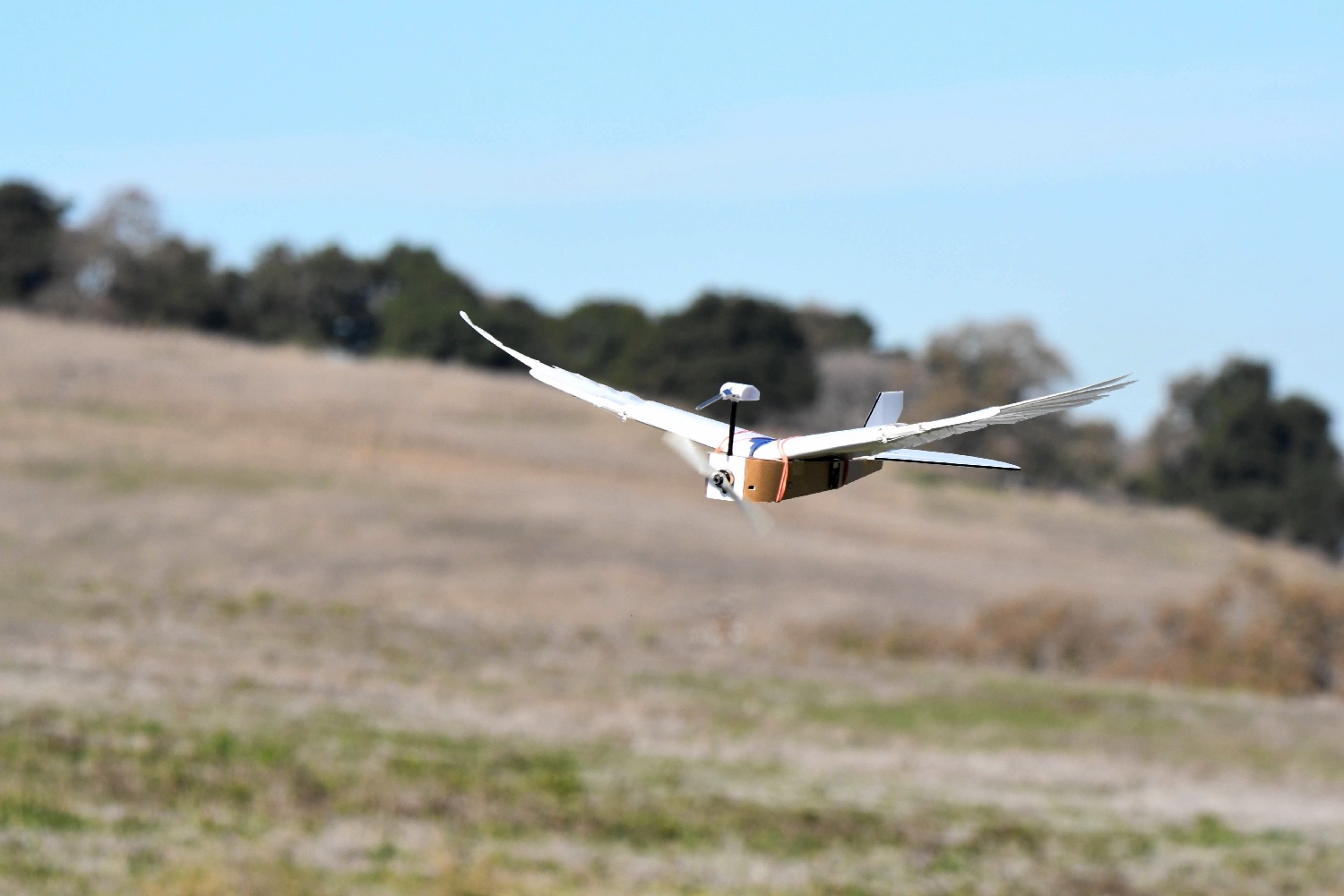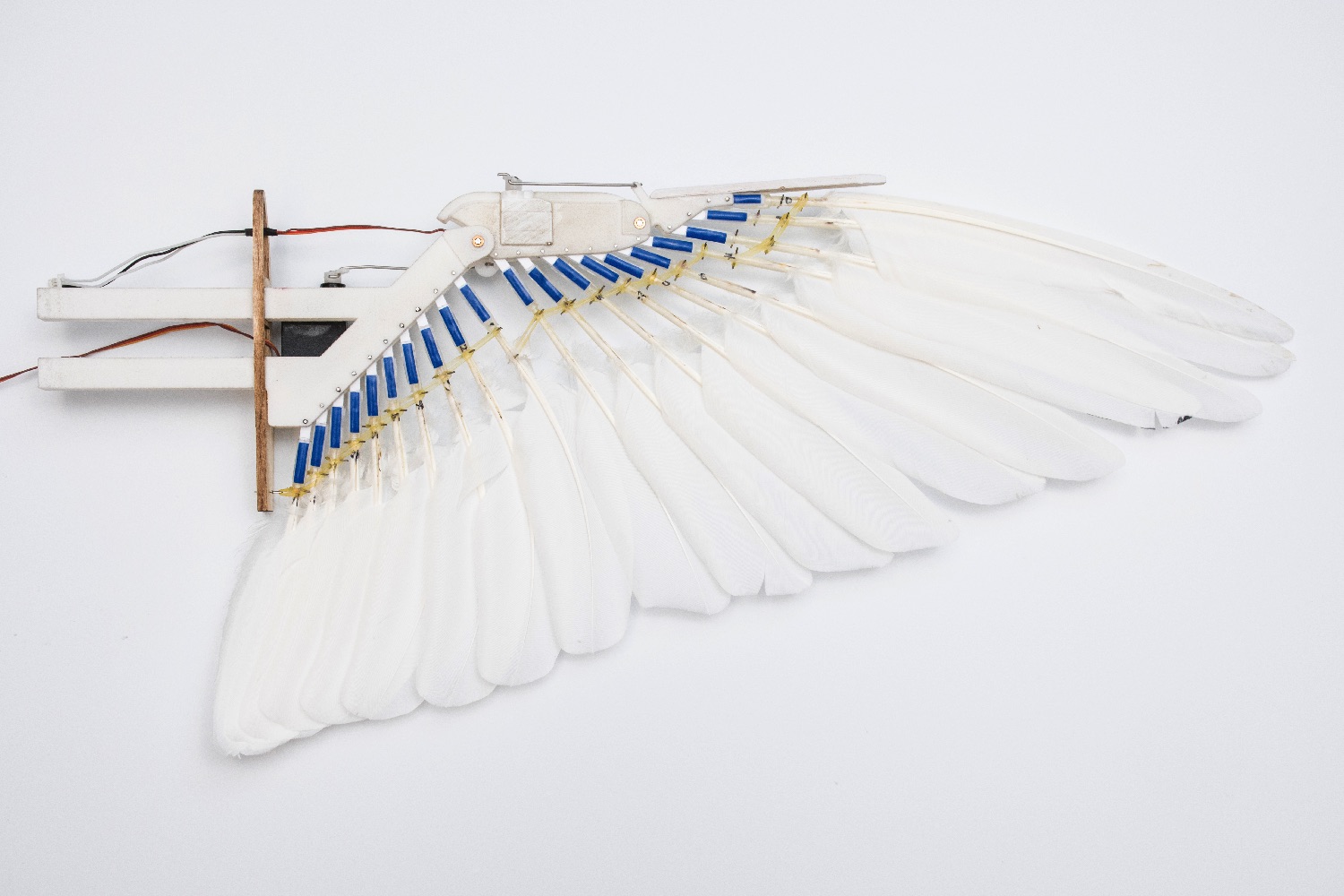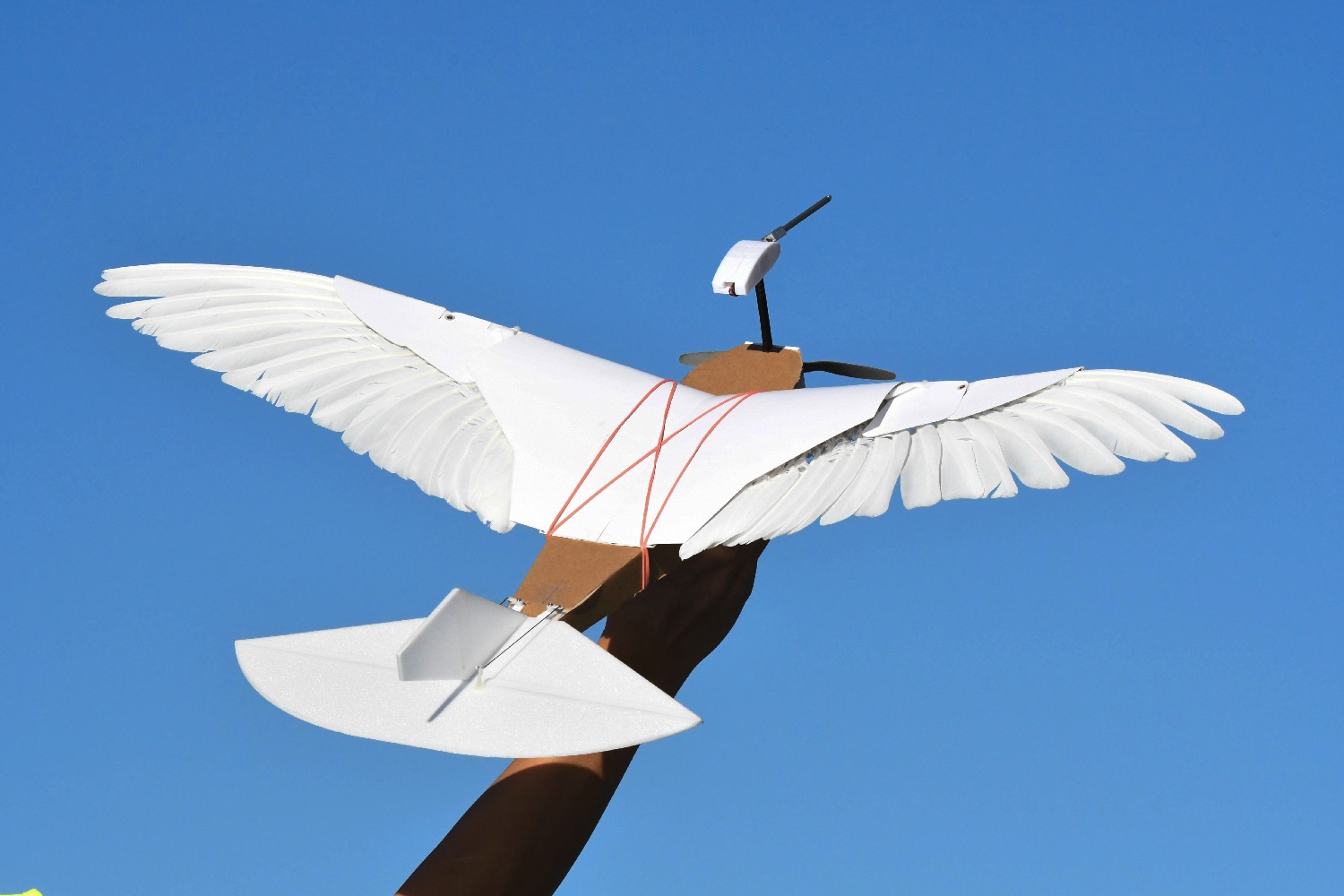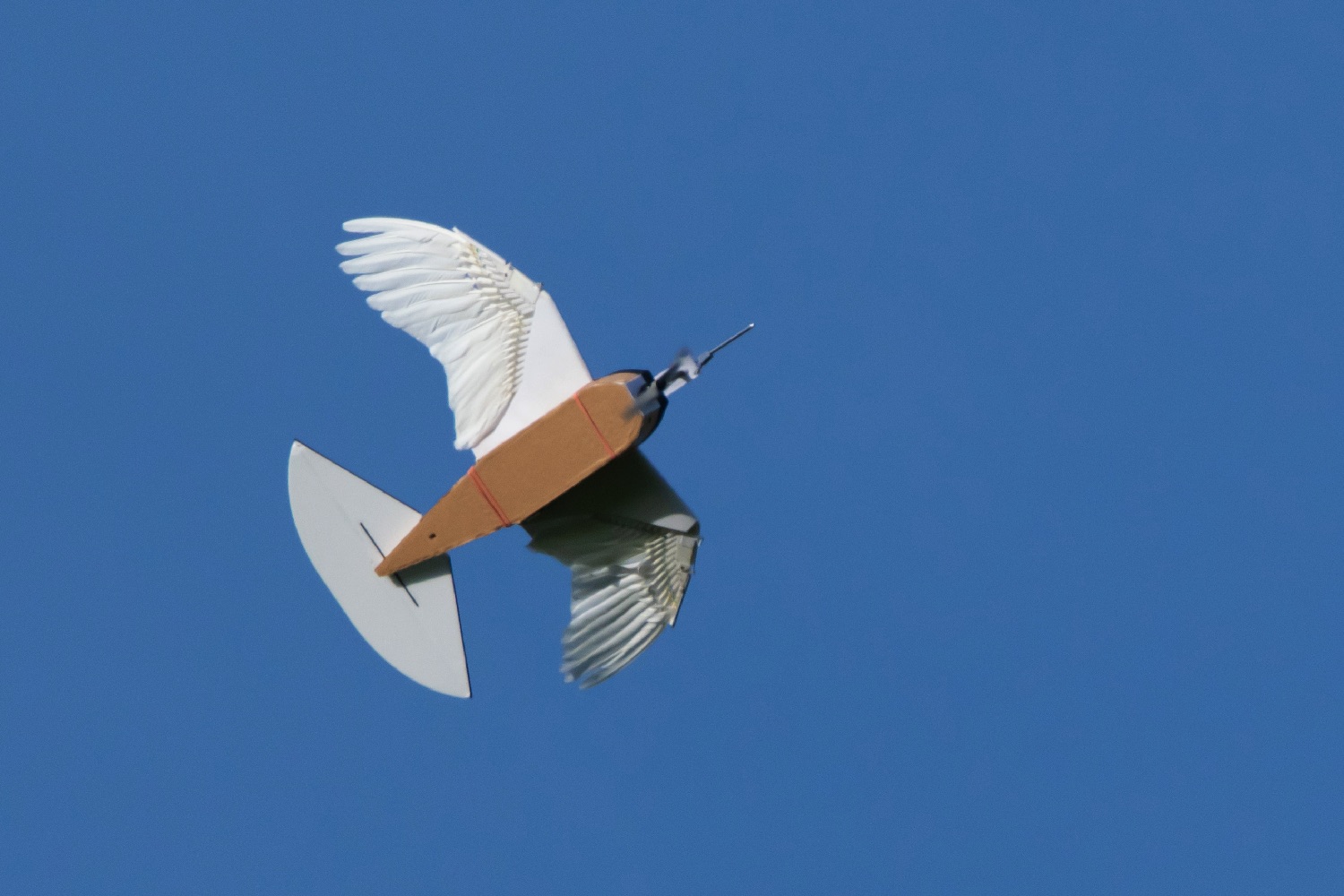Drones can fly like birds, but that’s pretty much where comparisons with our feathered friends end. Well, unless you build an experimental drone like PigeonBot, the unusual biomimetic creation developed by researchers at Stanford University. Boasting a pair of “biohybrid morphing wings,” it uses real feathers to test out a new way of making drones fly — that, despite its seeming impracticality, could turn out to be a useful innovation when it comes to unmanned aerial vehicles.
“My personal goal was to develop bird-like aerial robots as a model for studying bird flight,” David Lentink, head of Stanford’s Bio-Inspired Research & Design (BIRD) Lab, told Digital Trends.
While feathers might appear like they’re there for warmth or aesthetics, they serve an extremely practical use as well. In fact, they play a crucial role in helping birds achieve optimal wing shape. But the question of how birds control them has been up for debate. Some people have suggested that birds control each feather via individual muscles. Others refer to bird wing morphology in their work, but do not describe it in any granular detail. PigeonBot represents an attempt to find a definitive answer.
As Lentink notes, PhD student Amanda Stowers started by analyzing bird skeletal motion; ultimately determining that it was only necessary to emulate a couple of motions in a robot to be able to actuate 20 primary and another 20 secondary flight feathers. Another student, Laura Matloff, worked out how feathers move as a result of a simple linear response to skeletal movement. Once implemented in a robot (the titular PigeonBot), they created a lightweight robot with 40 actual pigeon feathers, which can carry out distinctly, err, pigeon-esque flight. While it still has a propellor on the front for lift, the feathers give it the ability to steer and maneuver just like a real bird.
And it’s not just about figuring out more about the natural world, either. Lentink believes there could be a potential real use-case in making softer robots that can more safely interact with the general public.
“The softness of the morphing wings is great,” he said. “Robots should be soft so they do not harm people, and this [could benefit future delivery drones]. Sure, Google and Amazon build some autonomous drones — anyone can do that with enough money — but they are [potentially] extremely dangerous around people. When these drones start making deliveries, human lives are put at risk. It would be great if current prototypes would be replaced with soft drones that disintegrate safely when interacting accidentally with humans.”
A paper describing the “basic science” aspect of this work was recently published in the journal Science. Meanwhile, a description of PigeonBot graced the pages of Science Robotics.
Editors' Recommendations
- Dazzling drone display flies straight into the record books
- Watch this festive drone show fly straight into the record books
- Drone show mishap sees flying machines drop out of the sky
- New phishing method looks just like the real thing, but it steals your passwords
- Wing builds bigger and smaller drones for more deliveries
